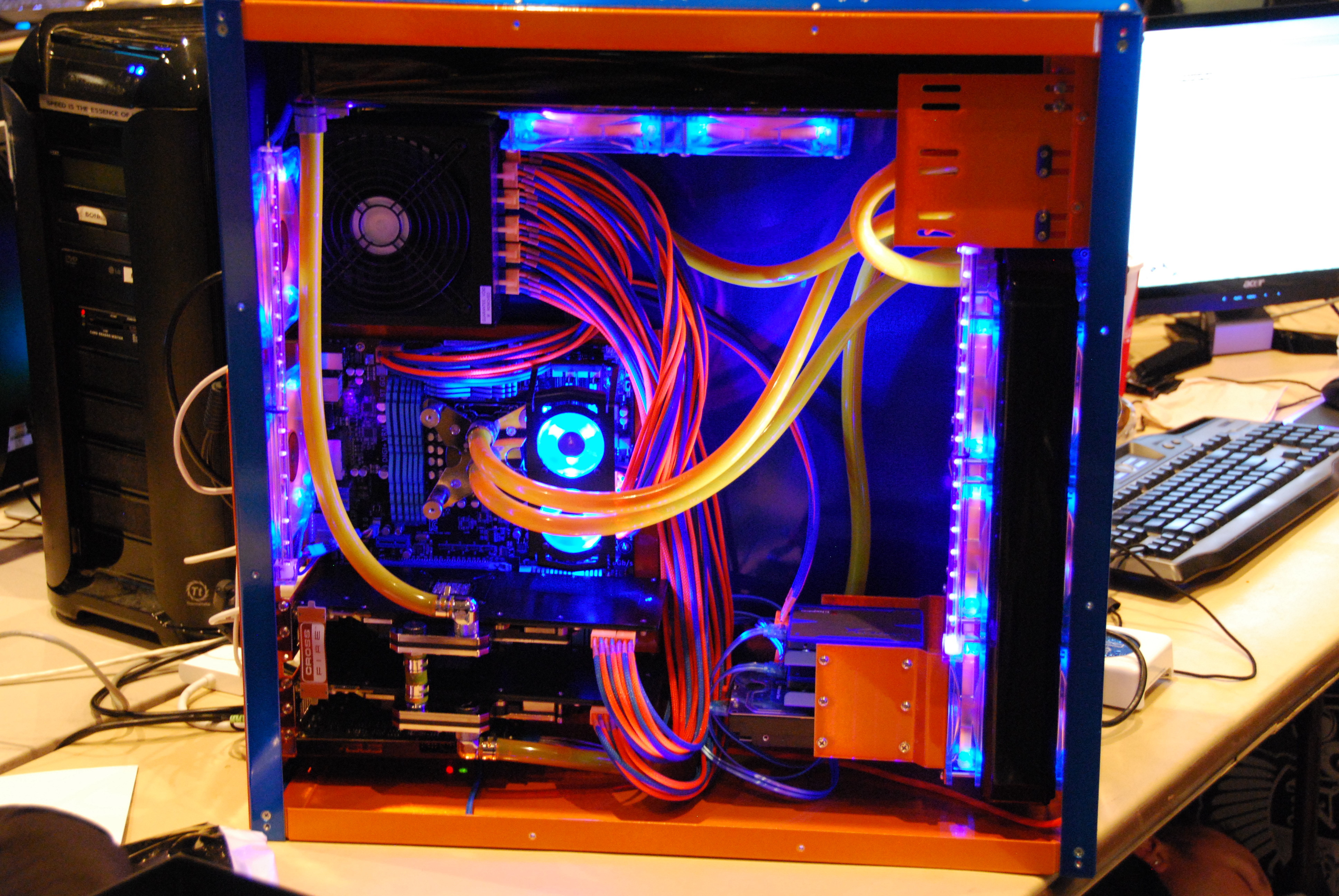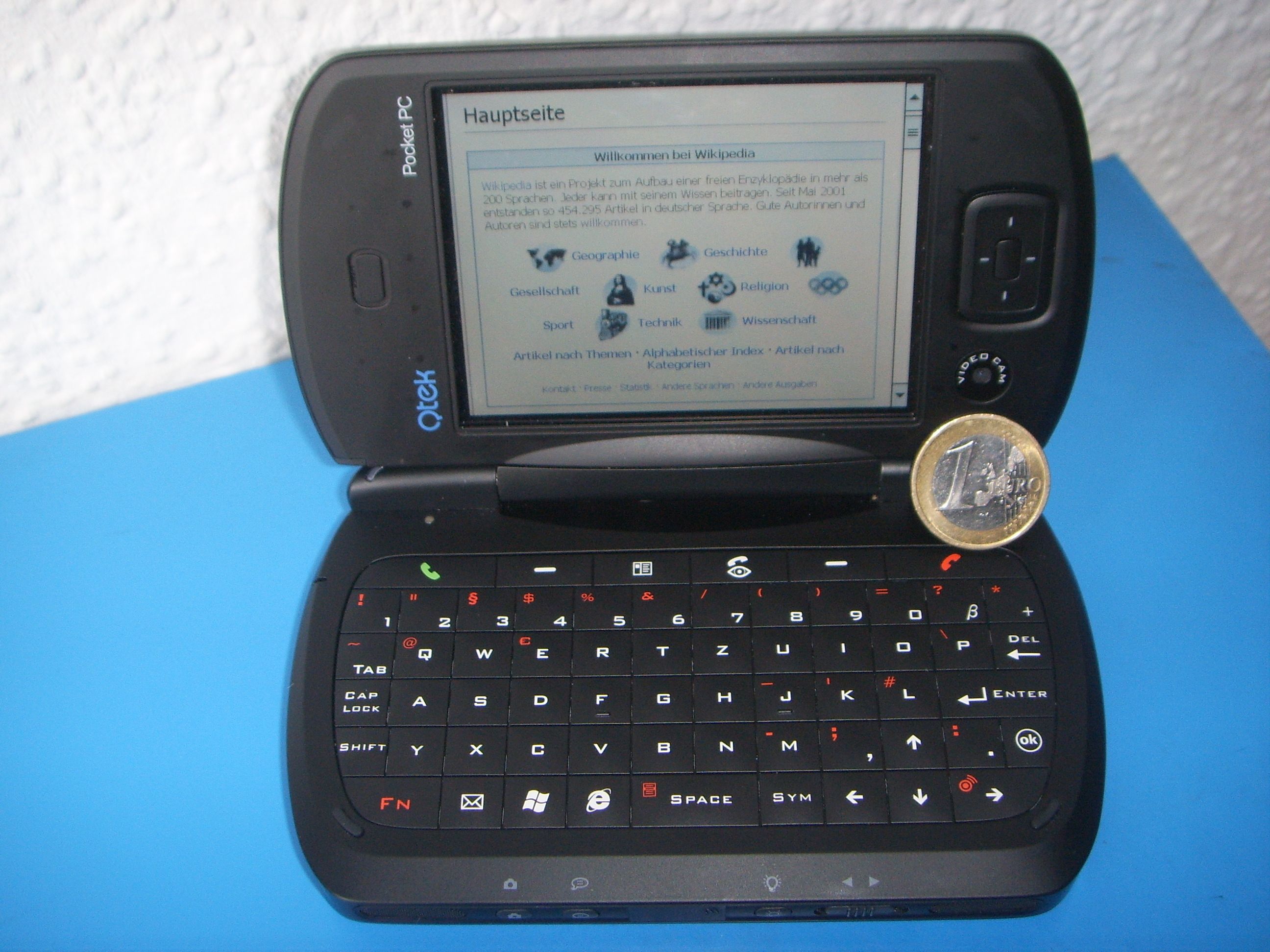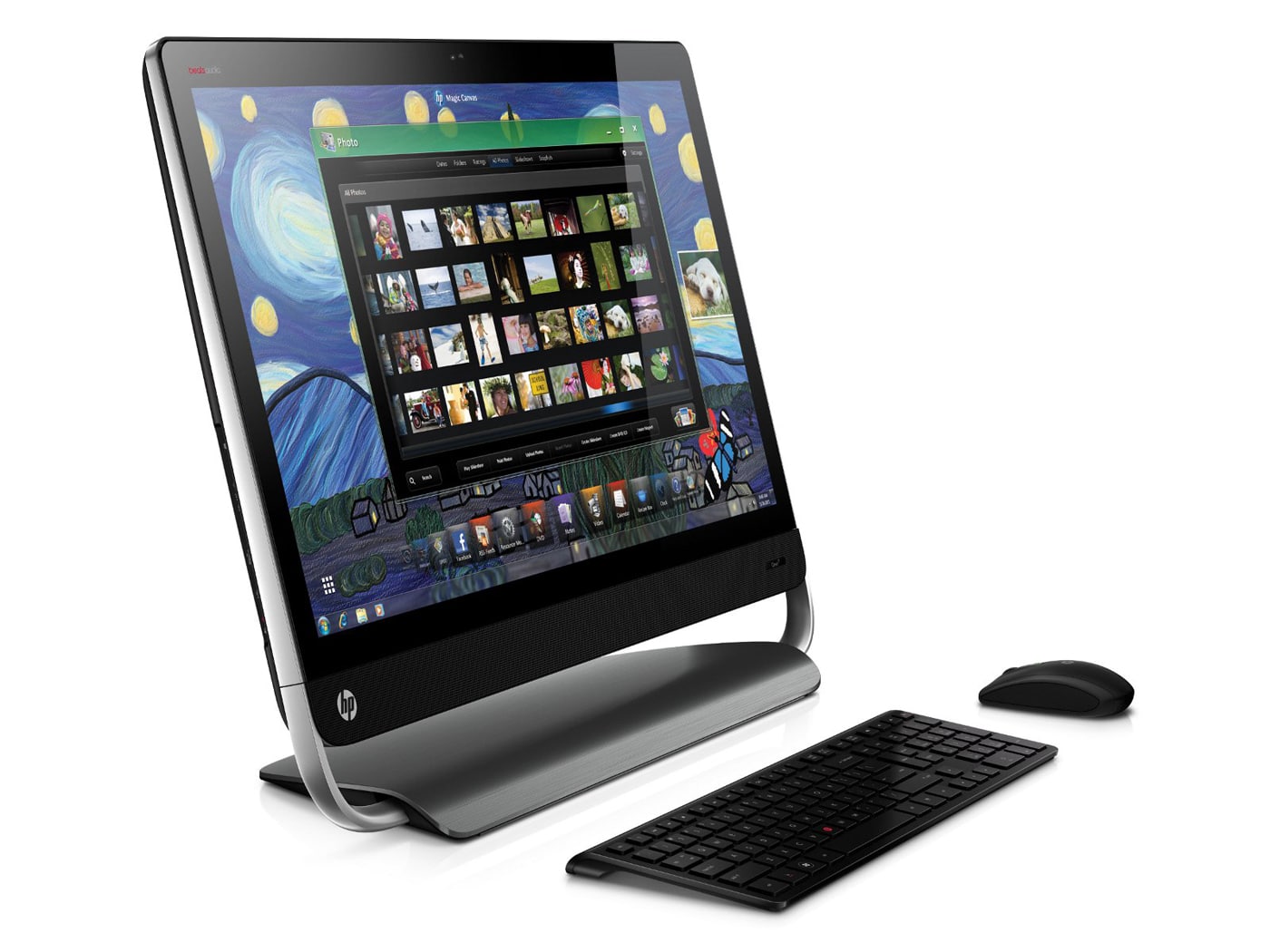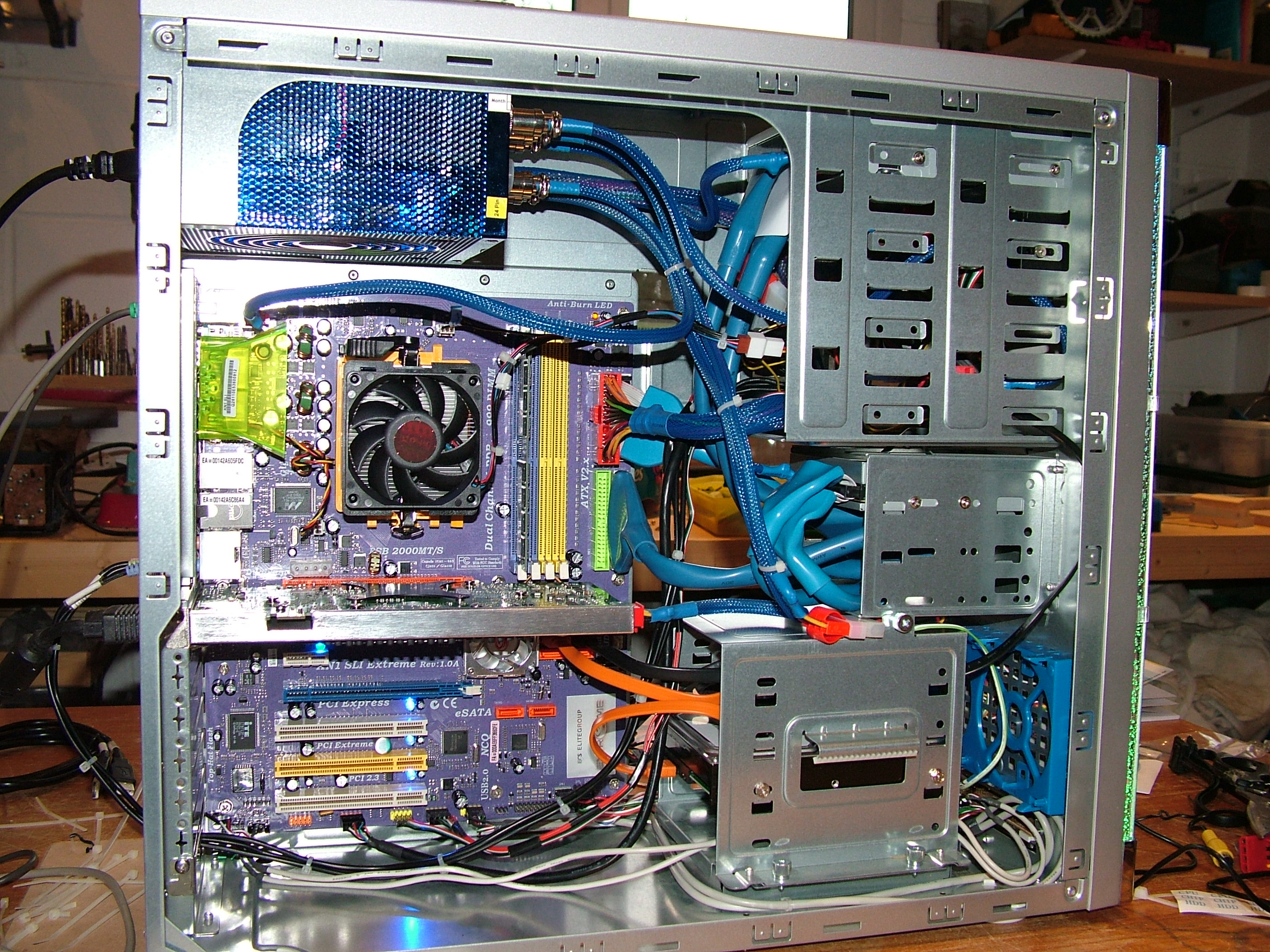Pc Wallpaper Download Biography
Source:- Google.com.pk
During the first half of the 20th century, many scientific computing needs were met by increasingly sophisticated analog computers, which used a direct mechanical or electrical model of the problem as a basis for computation. However, these were not programmable and generally lacked the versatility and accuracy of modern digital computers.[19]
The first modern analog computer was a tide-predicting machine, invented by Sir William Thomson in 1872. The differential analyser, a mechanical analog computer designed to solve differential equations by integration using wheel-and-disc mechanisms, was conceptualized in 1876 by James Thomson, the brother of the more famous Lord Kelvin.[15]
The art of mechanical analog computing reached its zenith with the differential analyzer, built by H. L. Hazen and Vannevar Bush at MITstarting in 1927. This built on the mechanical integrators of James Thomson and the torque amplifiers invented by H. W. Nieman. A dozen of these devices were built before their obsolescence became obvious.
By the 1950s the success of digital electronic computers had spelled the end for most analog computing machines, but analog computers remain in use in some specialized applications such as education (control systems) and aircraft (slide rule).
§The digital computer age begins
The principle of the modern computer was first described by computer scientist Alan Turing, who set out the idea in his seminal 1936 paper,[20] On Computable Numbers. Turing reformulated Kurt Gödel's 1931 results on the limits of proof and computation, replacing Gödel's universal arithmetic-based formal language with the formal and simple hypothetical devices that became known as Turing machines. He proved that some such machine would be capable of performing any conceivable mathematical computation if it were representable as an algorithm. He went on to prove that there was no solution to the Entscheidungsproblem by first showing that the halting problem for Turing machines isundecidable: in general, it is not possible to decide algorithmically whether a given Turing machine will ever halt.
He also introduced the notion of a 'Universal Machine' (now known as a Universal Turing machine), with the idea that such a machine could perform the tasks of any other machine, or in other words, it is provably capable of computing anything that is computable by executing a program stored on tape, allowing the machine to be programmable.Von Neumann acknowledged that the central concept of the modern computer was due to this paper.[21] Turing machines are to this day a central object of study in theory of computation. Except for the limitations imposed by their finite memory stores, modern computers are said to be Turing-complete, which is to say, they have algorithm execution capability equivalent to a universal Turing machine.
§The first electromechanical computers
By 1938 the United States Navy had developed an electromechanical analog computer small enough to use aboard a submarine. This was the Torpedo Data Computer, which used trigonometry to solve the problem of firing a torpedo from a boat to a moving target. During World War II similar devices were developed in other countries as well.
Replica of Zuse's Z3, the first fully automatic, digital (electromechanical) computer.
Early digital computers were electromechanical; electric switches drove mechanical relays to perform the calculation. These devices had a low operating speed and were eventually superseded by much faster all-electric computers, originally using vacuum tubes. The Z2, created by German engineer Konrad Zuse in 1939, was one of the earliest examples of an electromechanical relay computer.[22]
In 1941, Zuse followed his earlier machine up with the Z3, the world's first working electromechanical programmable, fully automatic digital computer.[23][24] The Z3 was built with 2000 relays, implementing a 22 bit word length that operated at a clock frequency of about 5–10 Hz.[25]Program code and data were stored on punched film. It was quite similar to modern machines in some respects, pioneering numerous advances such as floating point numbers. Replacement of the hard-to-implement decimal system (used in Charles Babbage's earlier design) by the simpler binary system meant that Zuse's machines were easier to build and potentially more reliable, given the technologies available at that time.[26] The Z3 was probably a complete Turing machine.
§The introduction of digital electronic programmable computers with vacuum tubes
Purely electronic circuit elements soon replaced their mechanical and electromechanical equivalents, at the same time that digital calculation replaced analog. The engineerTommy Flowers, working at the Post Office Research Station in London in the 1930s, began to explore the possible use of electronics for the telephone exchange. Experimental equipment that he built in 1934 went into operation 5 years later, converting a portion of the telephone exchange network into an electronic data processing system, using thousands of vacuum tubes.[19] In the US, John Vincent Atanasoff and Clifford E. Berry of Iowa State University developed and tested the Atanasoff–Berry Computer (ABC) in 1942,[27] the first "automatic electronic digital computer".[28] This design was also all-electronic and used about 300 vacuum tubes, with capacitors fixed in a mechanically rotating drum for memory.[29]
Colossus was the first electronicdigital programmable computing device, and was used to break German ciphers during World War II.
During World War II, the British at Bletchley Park achieved a number of successes at breaking encrypted German military communications. The German encryption machine, Enigma, was first attacked with the help of the electro-mechanical bombes. To crack the more sophisticated German Lorenz SZ 40/42 machine, used for high-level Army communications, Max Newman and his colleagues commissioned Flowers to build the Colossus.[29] He spent eleven months from early February 1943 designing and building the first Colossus.[30] After a functional test in December 1943, Colossus was shipped to Bletchley Park, where it was delivered on 18 January 1944[31] and attacked its first message on 5 February.[29]
Colossus was the world's first electronic digital programmable computer.[19] It used a large number of valves (vacuum tubes). It had paper-tape input and was capable of being configured to perform a variety of boolean logical operations on its data, but it was not Turing-complete. Nine Mk II Colossi were built (The Mk I was converted to a Mk II making ten machines in total). Colossus Mark I contained 1500 thermionic valves (tubes), but Mark II with 2400 valves, was both 5 times faster and simpler to operate than Mark 1, greatly speeding the decoding process.[32][33]
ENIAC was the first Turing-complete device, and performed ballistics trajectory calculations for the United States Army.
The US-built ENIAC[34] (Electronic Numerical Integrator and Computer) was the first electronic programmable computer built in the US. Although the ENIAC was similar to the Colossus it was much faster and more flexible. It was unambiguously a Turing-complete device and could compute any problem that would fit into its memory. Like the Colossus, a "program" on the ENIAC was defined by the states of its patch cables and switches, a far cry from the stored program electronic machines that came later. Once a program was written, it had to be mechanically set into the machine with manual resetting of plugs and switches.
It combined the high speed of electronics with the ability to be programmed for many complex problems. It could add or subtract 5000 times a second, a thousand times faster than any other machine. It also had modules to multiply, divide, and square root. High speed memory was limited to 20 words (about 80 bytes). Built under the direction of John Mauchly and J. Presper Eckert at the University of Pennsylvania, ENIAC's development and construction lasted from 1943 to full operation at the end of 1945. The machine was huge, weighing 30 tons, using 200 kilowatts of electric power and contained over 18,000 vacuum tubes, 1,500 relays, and hundreds of thousands of resistors, capacitors, and inductors.[35]
§Stored program computers eliminate the need for re-wiring
A section of the Manchester Small-Scale Experimental Machine, the first stored-program computer.
Early computing machines had fixed programs. Changing its function required the re-wiring and re-structuring of the machine.[29] With the proposal of the stored-program computer this changed. A stored-program computer includes by design an instruction set and can store in memory a set of instructions (a program) that details the computation. The theoretical basis for the stored-program computer was laid by Alan Turing in his 1936 paper. In 1945 Turing joined the National Physical Laboratory and began work on developing an electronic stored-program digital computer. His 1945 report ‘Proposed Electronic Calculator’ was the first specification for such a device. John von Neumann at the University of Pennsylvania, also circulated his First Draft of a Report on the EDVAC in 1945.[19]
Ferranti Mark 1, c. 1951.
The Manchester Small-Scale Experimental Machine, nicknamed Baby, was the world's first stored-program computer. It was built at the Victoria University of Manchester by Frederic C. Williams, Tom Kilburn and Geoff Tootill, and ran its first program on 21 June 1948.[36] It was designed as a testbedfor the Williams tube the first random-access digital storage device.[37] Although the computer was considered "small and primitive" by the standards of its time, it was the first working machine to contain all of the elements essential to a modern electronic computer.[38] As soon as the SSEM had demonstrated the feasibility of its design, a project was initiated at the university to develop it into a more usable computer, the Manchester Mark 1.
The Mark 1 in turn quickly became the prototype for the Ferranti Mark 1, the world's first commercially available general-purpose computer.[39]Built by Ferranti, it was delivered to the University of Manchester in February 1951. At least seven of these later machines were delivered between 1953 and 1957, one of them to Shell labs in Amsterdam.[40] In October 1947, the directors of British catering company J. Lyons & Company decided to take an active role in promoting the commercial development of computers. The LEO I computer became operational in April 1951 [41] and ran the world's first regular routine office computer job.
Free Wallpaper Downloads for Pc Wallpaper Download For Mobile Free Hd for Mobile Free Image Search for Pc Love Hd 3d free For Mobile
Free Wallpaper Downloads for Pc Wallpaper Download For Mobile Free Hd for Mobile Free Image Search for Pc Love Hd 3d free For Mobile
Free Wallpaper Downloads for Pc Wallpaper Download For Mobile Free Hd for Mobile Free Image Search for Pc Love Hd 3d free For Mobile
Free Wallpaper Downloads for Pc Wallpaper Download For Mobile Free Hd for Mobile Free Image Search for Pc Love Hd 3d free For Mobile
Free Wallpaper Downloads for Pc Wallpaper Download For Mobile Free Hd for Mobile Free Image Search for Pc Love Hd 3d free For Mobile
Free Wallpaper Downloads for Pc Wallpaper Download For Mobile Free Hd for Mobile Free Image Search for Pc Love Hd 3d free For Mobile
Free Wallpaper Downloads for Pc Wallpaper Download For Mobile Free Hd for Mobile Free Image Search for Pc Love Hd 3d free For Mobile
Free Wallpaper Downloads for Pc Wallpaper Download For Mobile Free Hd for Mobile Free Image Search for Pc Love Hd 3d free For Mobile
Free Wallpaper Downloads for Pc Wallpaper Download For Mobile Free Hd for Mobile Free Image Search for Pc Love Hd 3d free For Mobile
Free Wallpaper Downloads for Pc Wallpaper Download For Mobile Free Hd for Mobile Free Image Search for Pc Love Hd 3d free For Mobile
Free Wallpaper Downloads for Pc Wallpaper Download For Mobile Free Hd for Mobile Free Image Search for Pc Love Hd 3d free For Mobile










No comments:
Post a Comment